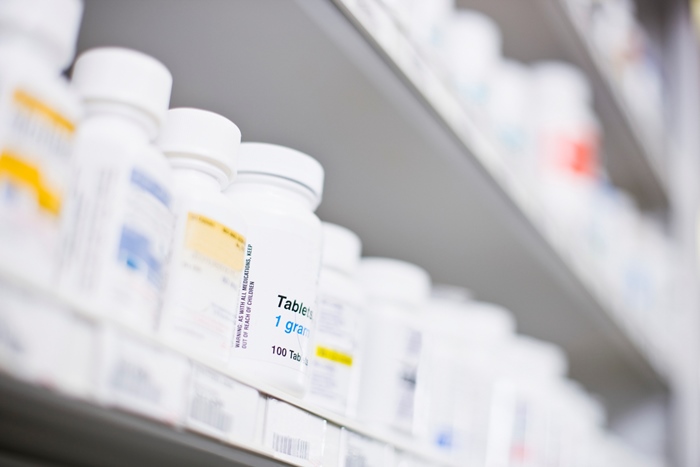Pharmacy Management
PDMP Value Could Be Ramped Up, Expert Contends

Prescription drug monitoring programs could be one of the most effective tools to address the abuse and misuse of opioids among injured workers. But jurisdictional variances, unavailable resources, and the lack of access to the information by some parties are hindering the potentially smooth flow of information.
Despite the shortcomings, experts say PDMPs are already proving to be invaluable. They say workers’ comp practitioners can urge state lawmakers to take steps to make them more effective.
“New York saw a radical change in the numbers of individuals receiving prescriptions from multiple prescribers and pharmacies” after a PDMP was implemented, said John Eadie, director of the PDMP Center of Excellence at Brandeis University. “Overall, the impact of a PDMP seems to have a very significant and immediate kind of responsiveness. So much so that the Centers for Disease Control and Prevention is recommended all states do this — mandatorily require researching [a PDMP] before a first prescription and ever after.”
Speaking at a webinar on PDMPs produced by the International Association of Industrial Accident Boards and Commissions, Eadie said the number of individuals in New York engaging in doctor shopping plummeted after that state’s prescription monitoring program was implemented last year. He said that’s just one example of the value of the programs.
PDMP Basics
Nearly every state has a program to track information from pharmacies on patients who are dispensed medications. The data includes a patient’s name, address, date of birth, and gender, as well as information about the prescriber and the medication. The name, type, strength, manufacturer of the drug, and the quantity and date it was dispensed are also recorded.
The types of drugs included vary among jurisdictions. Some states collect information on drugs classified as Schedule II through V of the Controlled Substances Act while others confine the information to more addictive medications, and still others include noncontrolled substances. Six gather information when the drug tramadol is dispensed.
States gather the information from pharmacies and make it available to various parties within the state while some also allow sharing of PDMP information with other states.
The frequency of reporting the information also varies among states from one to 30 days. In the 17 states that collect the information each day, Eadie said the data is very current and available.
“The laws in these states require all controlled substances to be recorded in the PDMPs,” Eadie said.” That’s why it is so critical to workers’ comp programs.”
Accessing the Info
Reviewing the data in the PDMP can wield some surprising results. “Physicians are generally unaware of the extent of doctor shopping,” Eadie said. “Physicians need to go to the PDMPs.”
However, many states do not require providers to look at the PDMP before they prescribe medications to injured workers. But that is changing.
“PDMP legislation was very important in 2014,” said Jaelene Fayhee, director of compliance and government affairs at pharmacy benefit management company myMatrixx. “Some related to more frequent reporting. The District of Columbia created a PDMP, and a couple laws are specific to workers’ comp.”
Workers’ comp payers are generally restricted from accessing information in PDMPs. According to Eadie, only nine jurisdictions allow access to PDMPs by workers’ comp payers.
“Third-party payers want access to the data; they want to find out if they have individuals enrolled in their programs who may be avoiding their detection programs by going to prescribers and paying cash,” Eadie said. “The only way they can find out is by going to the PDMP. There is a wide opportunity there.”
Earlier this year, the COE at Brandeis issued a report and recommended medical insurers be given access to PDMP data beyond that on prescriptions for which they have paid. The report followed a meeting of high-level experts (see box).
Unsolicited Reporting
One of the essential elements of a successful PDMP is getting parties to use it, especially medical providers. But many physicians do not access PDMPs because they are not required to do so and don’t realize the value in it.
Prescribers who use the data “discover all sorts of issues they had no clue about,” Eadie said. Information from Massachusetts showed that “when physicians were told about patients going to multiple prescribers and pharmacies, more than 90 percent of prescribers had no idea before they received that report from the PDMP. Therefore, where use of the data was voluntary, they didn’t ask because they had no clue. But when the data was sent to them, they finally saw what was going on.”
States that generate so-called unsolicited reports proactively send alerts of data suggestive of questionable activity involving controlled substances such as doctor shopping or illicit prescribing. They notify prescribers and pharmacists that patients may be abusing or diverting controlled substances. But while nearly half the states are authorized to do so, many do not generate unsolicited reports.
“PDMPs may lack money or personnel to do transmission of the data. That’s something you and the industry may want to take a hard look at,” Eadie advised practitioners. “It shows how much yet remains to be done in the country to use one of the most effective tools available to deal with the epidemic.”










